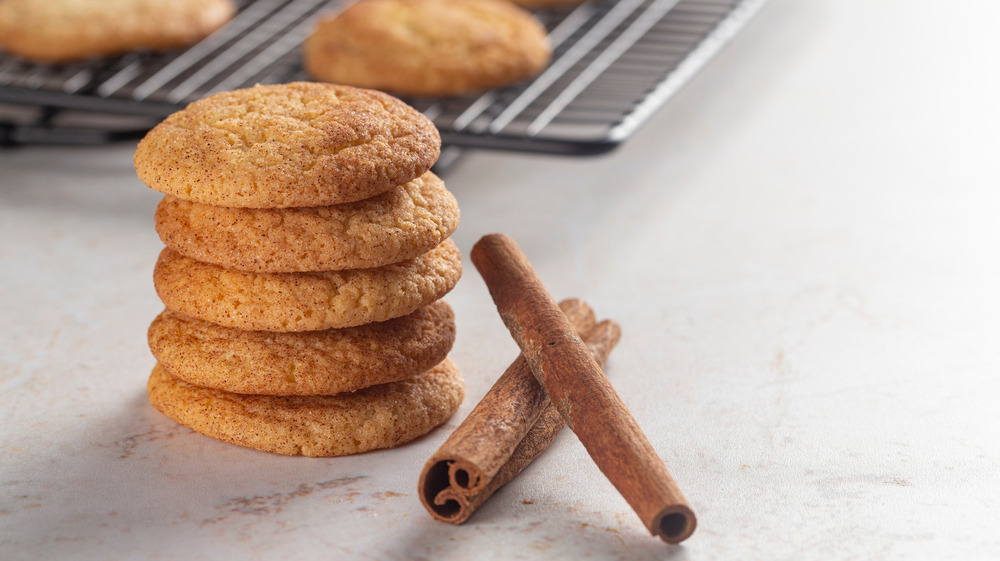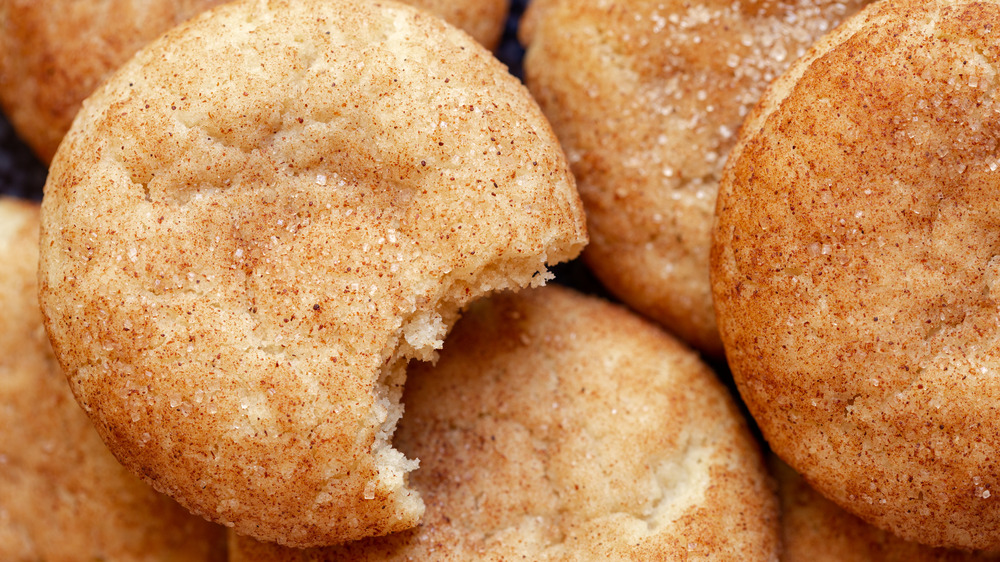Here's How Snickerdoodles May Have Got Their Name
Snickerdoodle may sound like an off-brand dog breed, but no — Snickerdoodles aren't exactly a cross between a candy bar with peanuts and caramel covered in milk chocolate plus a poodle. They're cookies, similar to sugar cookies, but with a tangy twist. But why such an eccentric name? According to Grit, this New England phenomenon's name came about from either the German or Dutch language, but what word it derived from still seems up for debate.
In the same piece by Grit, there are several theories regarding the origin of this tangy cookie's name. One idea is that the word snickerdoodle comes from the German word for snail dumpling, which in its original language is spelt schneckennudeln. Another idea, less snail-related, but not necessarily spot on, is that snickerdoodles come from the Dutch word snekrad which vaguely translates to snicker. Then, of course, in an article by East Ohio News, the outlet suggests that schneckennudeln might actually be a compound word, mixing snicker and doodle and essentially meaning "crinkly noodle." Whatever the case may be, the etymology behind snickerdoodles isn't necessary to enjoy this tangy treat.
What is a snickerdoodle?
What exactly is a snickerdoodle, though? And why is it any different than a so-called "regular" sugar cookie? The answer lies in the tartar. In an article by HuffPost, it pointed out that there is a very common misconception about snickerdoodles. Many people think the only difference between sugar cookies and the outlandishly named snickerdoodles are that one is covered in cinnamon, and the other isn't. However, the real difference is cream of tartar.
In that same article by the HuffPost, it covers the fact that it's cream of tartar that distinguishes the snickerdoodle from other cookies. It not only adds that slight tinge of savory flavor, but it also acts as a chemical agent that when mixed with the base ingredients in sugar cookies, interferes with the properties that ultimately make them become so hard and crunchy on the outside — hence the soft and chewy nature of what we know as snickerdoodles. Or crinkly noodle cookies. Or snail dumpling. But mainly, snickerdoodles.

